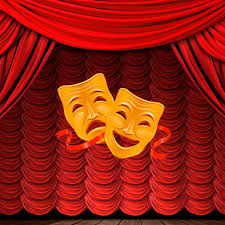Se-tenant: Isle of Man Arts Council, 60 Years (Isle of Man 2025)
Isle of Man Arts Council, 60 Years (Isle of Man 2025)
14 January (Isle of Man ) within release Isle of Man Arts Council, 60 Years (2025) goes into circulation Se-tenant Isle of Man Arts Council, 60 Years face value 11.55 Manx pound
| Se-tenant Isle of Man Arts Council, 60 Years in catalogues | |
|---|---|
| Colnect codes: | Col: IM 2025.01.14-03 |
Se-tenant is square format.
Sold in strips of ten different designs.Also in the issue Isle of Man Arts Council, 60 Years (2025):
- Stamp - Community Arts face value 90;
- Stamp - Community Arts face value 90;
- Stamp - Concerts face value 90;
- Stamp - Concerts face value 90;
- Stamp - Dance face value 1;
- Stamp - Dance face value 1;
- Stamp - Education face value 2.15;
- Stamp - Education face value 2.15;
- Stamp - Exhibitions face value 1;
- Stamp - Exhibitions face value 1;
- Se-tenant - Isle of Man Arts Council, 60 Years face value 5*90;
- Se-tenant - Isle of Man Arts Council, 60 Years face value 7.05;
- Se-tenant - Isle of Man Arts Council, 60 Years face value 11.55;
- Stamp - Music face value 1;
- Stamp - Music face value 1;
- Stamp - Public Art face value 90;
- Stamp - Public Art face value 90;
- Stamp - Sculpture face value 90;
- Stamp - Sculpture face value 90;
- Stamp - Theatre face value 90;
- Stamp - Theatre face value 90;
- Stamp - Visual Art face value 1.90;
- Stamp - Visual Art face value 1.90;
Se-tenant Isle of Man Arts Council, 60 Years it reflects the thematic directions:
Architecture (Latin architectura, from the Greek ἀρχιτέκτων arkhitekton "architect", from ἀρχι- "chief" and τέκτων "builder") is both the process and the product of planning, designing, and constructing buildings and other physical structures. Architectural works, in the material form of buildings, are often perceived as cultural symbols and as works of art. Historical civilizations are often identified with their surviving architectural achievements.
Art is a diverse range of human activities in creating visual, auditory or performing artifacts (artworks), expressing the author's imaginative or technical skill, intended to be appreciated for their beauty or emotional power. In their most general form these activities include the production of works of art, the criticism of art, the study of the history of art, and the aesthetic dissemination of art. The oldest documented forms of art are visual arts, which include creation of images or objects in fields including painting, sculpture, printmaking, photography, and other visual media. Architecture is often included as one of the visual arts; however, like the decorative arts, or advertising, it involves the creation of objects where the practical considerations of use are essential—in a way that they usually are not in a painting, for example. Music, theatre, film, dance, and other performing arts, as well as literature and other media such as interactive media, are included in a broader definition of art or the arts. Until the 17th century, art referred to any skill or mastery and was not differentiated from crafts or sciences. In modern usage after the 17th century, where aesthetic considerations are paramount, the fine arts are separated and distinguished from acquired skills in general, such as the decorative or applied arts.
Dance is an art form, often classified as a sport, consisting of sequences of body movements with aesthetic and often symbolic value, either improvised or purposefully selected. Dance can be categorized and described by its choreography, by its repertoire of movements or by its historical period or place of origin. Dance is typically performed with musical accompaniment, and sometimes with the dancer simultaneously using a musical instrument themselves.
A musical instrument is a device created or adapted to make musical sounds. In principle, any object that produces sound can be considered a musical instrument—it is through purpose that the object becomes a musical instrument. A person who plays a musical instrument is known as an instrumentalist. The history of musical instruments dates to the beginnings of human culture. Early musical instruments may have been used for rituals, such as a horn to signal success on the hunt, or a drum in a religious ceremony. Cultures eventually developed composition and performance of melodies for entertainment. Musical instruments evolved in step with changing applications and technologies.
Sculpture is the branch of the visual arts that operates in three dimensions. Sculpture is the three-dimensional art work which is physically presented in the dimensions of height, width and depth. It is one of the plastic arts. Durable sculptural processes originally used carving (the removal of material) and modelling (the addition of material, as clay), in stone, metal, ceramics, wood and other materials but, since Modernism, there has been almost complete freedom of materials and process. A wide variety of materials may be worked by removal such as carving, assembled by welding or modelling, or moulded or cast.
Theatre or theater is a collaborative form of performing art that uses live performers, usually actors or actresses, to present the experience of a real or imagined event before a live audience in a specific place, often a stage. The performers may communicate this experience to the audience through combinations of gesture, speech, song, music, and dance. It is the oldest form of drama, though live theatre has now been joined by modern recorded forms. Elements of art, such as painted scenery and stagecraft such as lighting are used to enhance the physicality, presence and immediacy of the experience. Places, normally buildings, where performances regularly take place are also called "theatres" (or "theaters"), as derived from the Ancient Greek θέατρον (théatron, "a place for viewing"), itself from θεάομαι (theáomai, "to see", "to watch", "to observe").



